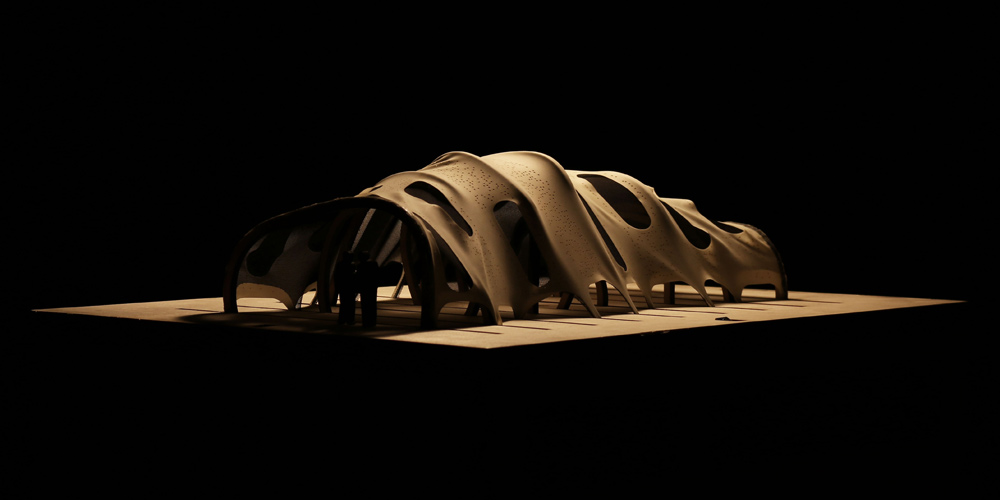
Credit: Julian Jauk
Julian Jauk (AT)
A living piece of architecture is a conceptual utopian design for housing beyond smart homes, intended to overcome existing dualisms such as digital and material, artificial and natural.
The kinetic, photosensitive and adaptive model shows a type of architecture that constantly changes its morphology to adapt not only to the environment but also to human emotions.
The shape, size and speed of adaptation are controlled by an evolutionary optimization algorithm, which is a bionic technology inspired by nature. But instead of a lifetime cycle, one iteration takes just a few seconds. This algorithm follows biological criteria for life that have been transferred to architecture, such as physical irritability, and growth through tensile materials within a self-regulating system. Participants are invited to stimulate the architecture by setting it to their mood by changing the energy and light sources, as the building is intended to evolve from the climate given in this way—like plants or animals do.
Credits
Univ.-Prof. Dipl.-Arch. Dr.sc.ETH Urs Leonhard Hirschberg
Institut für Architektur und Medien, Technische Universität Graz
Priv.-Doz.in Mag.a Dr.in Doris Haas
Institut für Hygiene, Mikrobiologie und Umweltmedizin, Medizinische Universität Graz
Ao. Univ.-Prof. Mag. Dr.rer.nat. Martin Grube
Institut für Pflanzenwissenschaften, Universität Graz
Assoc. Prof. Dipl.-Ing. Dr.techn. Franziska Hederer
Institut für Raumgestaltung, Technische Universität Graz
Ao. Univ.-Prof. Priv.-Doz. Dr.phil. Werner Jauk
Institut für Musikwissenschaft, Universität Graz
Univ.-Ass. Mag. Dr.rer.nat Emanuel Jauk
Institut für Psychologie, Universität Graz

